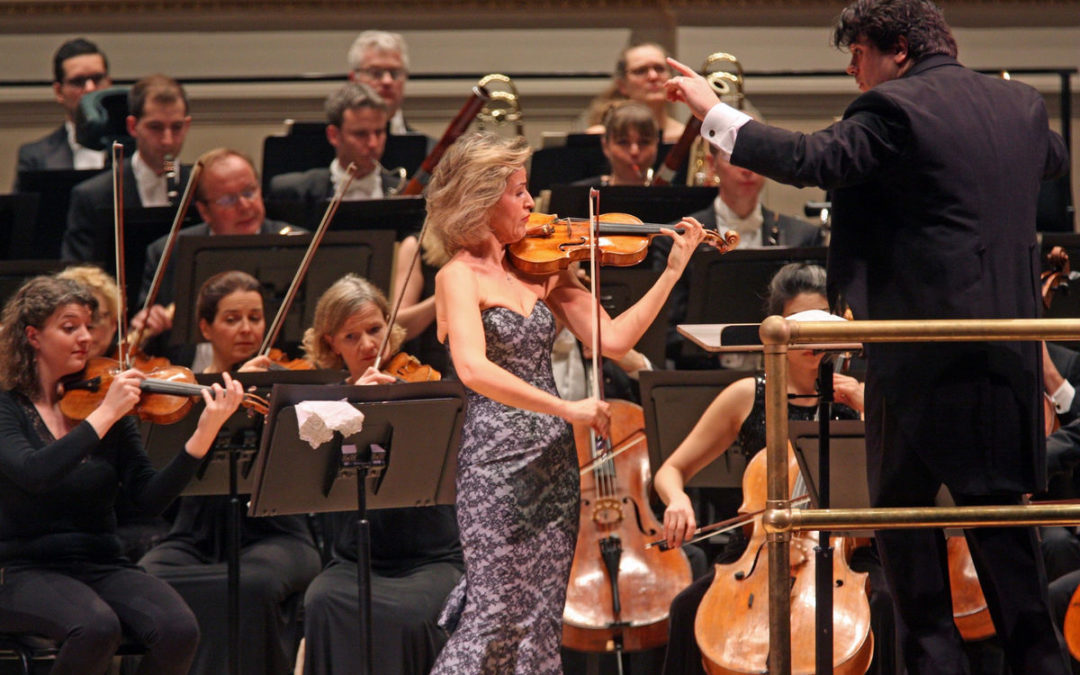NEW YORK TIMES — FEBRUARY 15, 2015 — As anniversaries go, a sesquicentennial may lack the obvious punch of a centennial or bicentennial. (Don’t bother to look it up; a sesquicentennial is a 150th anniversary.) But the classical-music world will take any anniversary it can get.
That the two great Scandinavian symphonists — the Finn Jean Sibelius and the Dane Carl Nielsen — were both born in 1865 comes as a little bonanza to orchestras this year, especially Scandinavian ones. So it was no surprise when the Danish National Symphony Orchestra performed Sibelius’s “Valse Triste” and Violin Concerto and Nielsen’s Fourth Symphony (“Inextinguishable”) at Carnegie Hall on Wednesday evening.
It is fascinating to compare and contrast the composers, not only in their sound-worlds, each a distinctive blend of heat and cold, and in their innovative approaches to musical form but also in their biographies and posthumous reputations. Nielsen wrote six symphonies from 1891 to 1925 and died in 1931. Sibelius wrote seven from 1899 to 1924 but ran plumb out of creative steam soon thereafter, though he lived until 1957.
Sibelius’s reputation fluctuated for a time but now seems solidly established. Nielsen’s never achieved such heights, despite occasional stirrings of interest like the current one sparked by Alan Gilbert at the New York Philharmonic.
The Danish National Symphony (not to be confused with the Danish National Chamber Orchestra, recently disbanded) was founded in 1925, and its distinctions include having given the Carnegie premiere of Nielsen’s Fourth Symphony, in 1952. Its last music director was Rafael Frühbeck de Burgos, from 2012 until his death last June.
Cristian Măcelaru, the Romanian-born conductor in residence of the Philadelphia Orchestra, presided here, and the concert was dedicated to Mr. Frühbeck’s memory. The violinist Anne-Sophie Mutter, the soloist in the concerto, offered her own moving tribute to Mr. Frühbeck with an encore, the Sarabande from Bach’s Unaccompanied Partita in D minor.
Her performance of the Sibelius Concerto was superb, as expected. The accuracy and purity of her tone seem only to have grown in recent years, though there never seemed all that much room for growth.
What’s more, this comes at a time when she is taking ever greater risks. What was that little Hungarian bend in pitch early on? Her tone always seems animated, even on sustained pitches: growing, receding, responding, it seems, to some spontaneous urge.
The Danish players probably didn’t need much from Mr. Măcelaru in the Nielsen, but he injected passion and drive, and they responded beautifully. The orchestra has a smooth, lovely string sound (announced at the outset in Sibelius’s “Valse Triste”), rustic-sounding woodwinds and incisive brasses. The dueling timpanists at the end of the symphony — René Felix Mathiesen and Lars Vestergaard Larsen — were, appropriately, showstoppers.
The orchestra’s encore, Nielsen’s “Maskarade” Overture, was predictable but delicious.
Photo: Hiroyuki Ito
The New York Times | Feb. 15, 2015 | The New York Times ➭

